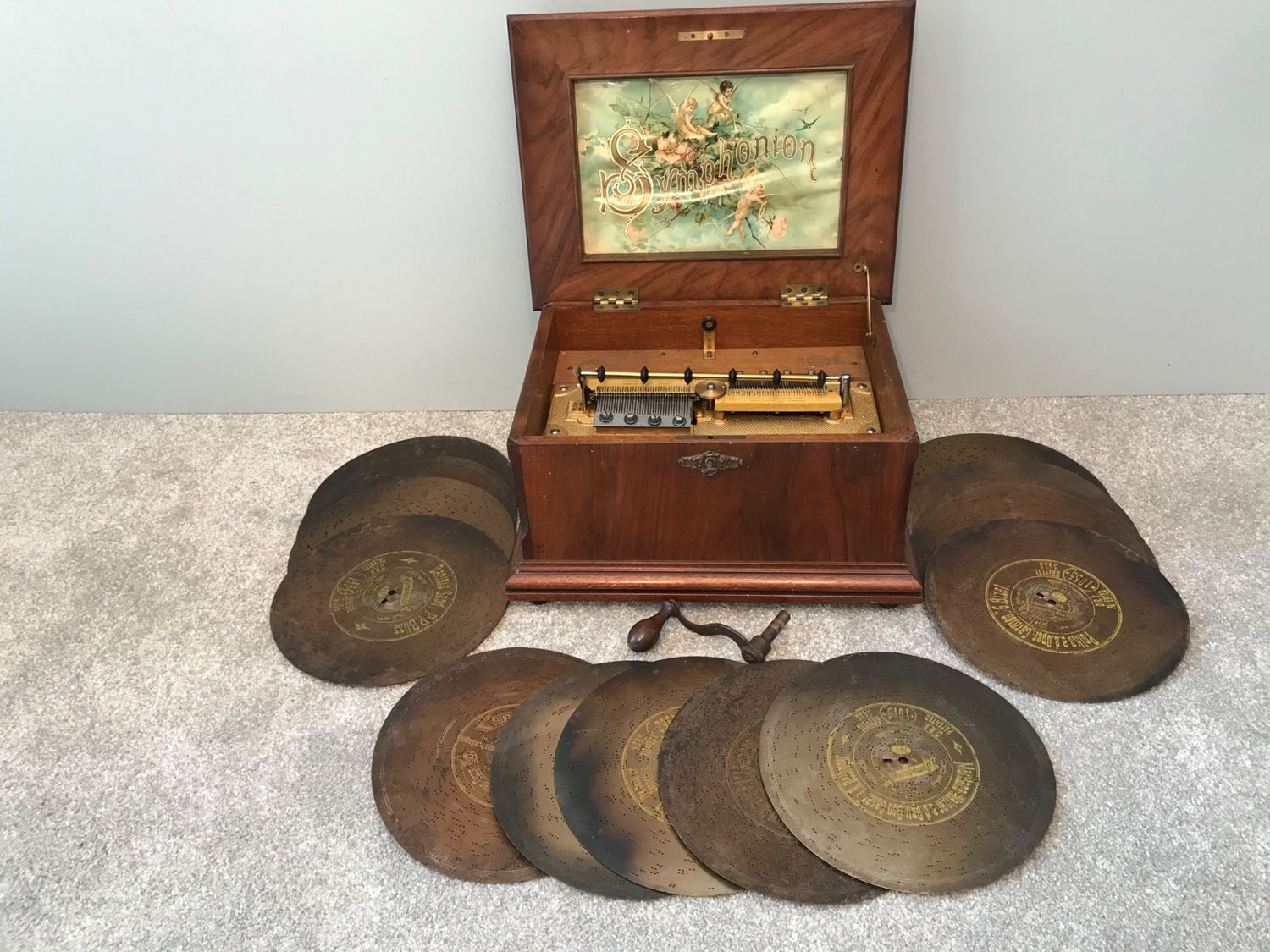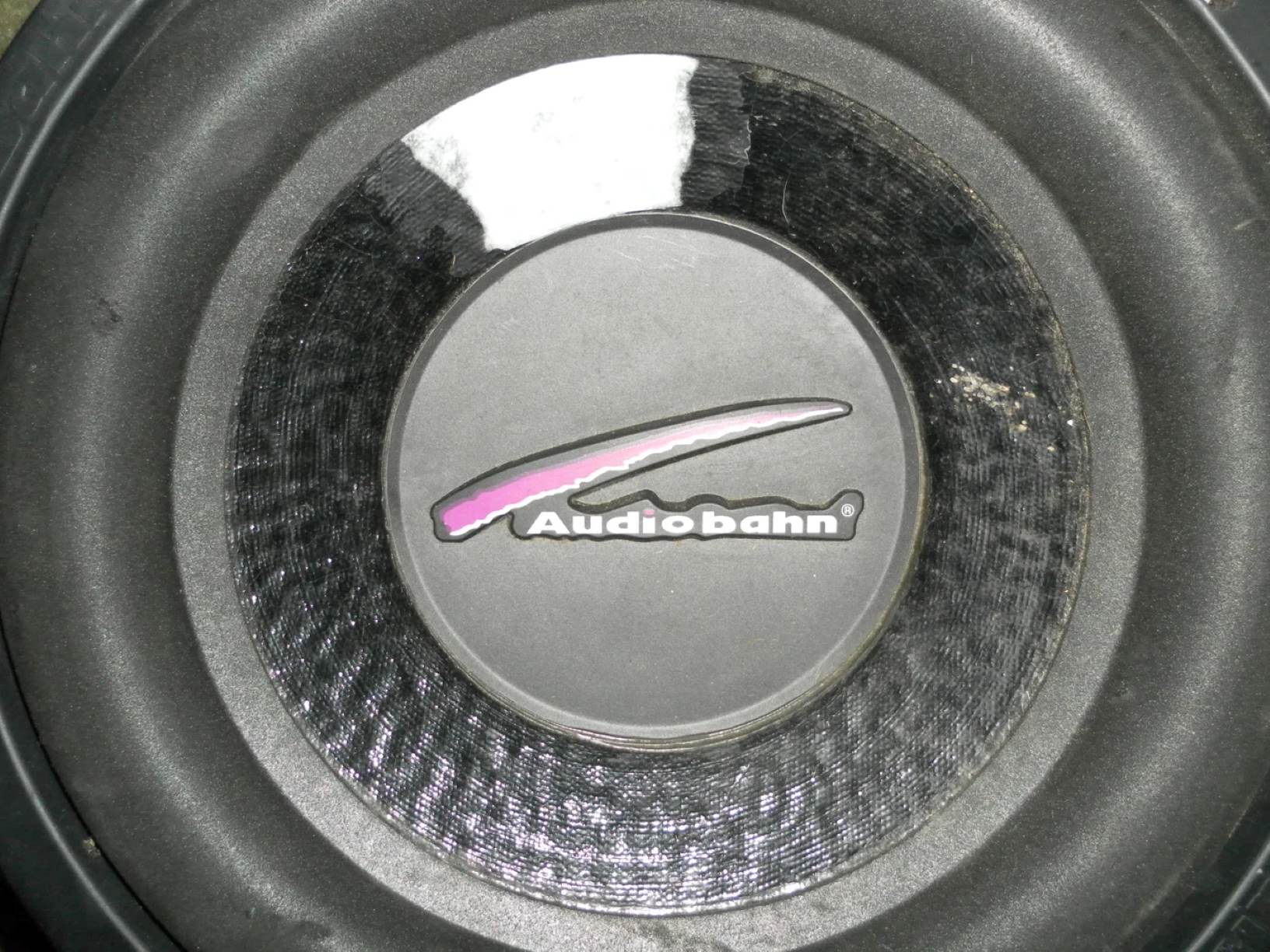Home>Devices & Equipment>Music Box>How To Fix A Music Box That Runs Slow


Music Box
How To Fix A Music Box That Runs Slow
Published: January 12, 2024
Learn how to fix a music box that runs slow with our step-by-step guide. Get your music box back in tune and enjoy its sweet melodies again.
(Many of the links in this article redirect to a specific reviewed product. Your purchase of these products through affiliate links helps to generate commission for AudioLover.com, at no extra cost. Learn more)
Table of Contents
Introduction
Music boxes have been captivating people for centuries with their enchanting melodies and intricate mechanisms. These timeless treasures hold a special place in our hearts, evoking nostalgia and wonder with their delicate sounds. Whether you inherited a cherished heirloom or purchased a new music box, encountering a problem like slow running can be disheartening. Fortunately, with some basic knowledge and a few simple steps, you can potentially fix a music box that runs slow and restore it to its former glory.
Before diving into the troubleshooting process, it’s important to understand the inner workings of a music box. Music boxes usually consist of a metal cylinder or disk with pins or prongs that pluck the comb, a series of tuned metal or glass plates. The comb’s vibrations produce the beautiful melodies we adore. Additionally, music boxes are powered by a spring mechanism, which stores and releases energy to drive the cylinder or disk.
When a music box begins to run slow, it can be caused by a variety of factors. Dust and debris accumulation, worn or damaged parts, insufficient lubrication, or an imbalance in the spring tension can all contribute to this issue. By systematically assessing the problem, cleaning the music box, lubricating the mechanism, and making necessary adjustments, you can often get your music box back to its original speed.
In the following sections, we will walk you through the step-by-step process of troubleshooting and fixing a music box that runs slow. While some tasks may require a certain level of technical skill or specialized tools, many repairs can be done easily at home with a little patience and attention to detail. So, let’s dive in and bring the sweet melodies of your music box back to life!
Assessing the Problem
Before attempting to fix a music box that runs slow, it’s important to first assess the problem and identify the potential causes. By understanding the root cause of the issue, you can effectively troubleshoot and implement the appropriate solutions.
One common cause of a music box running slow is the buildup of dust and debris. Over time, particles can accumulate on the delicate machinery, hindering its movement and causing a decrease in speed. Another possibility is that the music box may have worn or damaged parts that need to be replaced. Friction and wear can occur over time, impacting the smooth operation of the mechanism.
Insufficient lubrication can also lead to a music box running slow. The mechanical components require proper lubrication to operate smoothly. Without adequate lubrication, the friction increases, resulting in reduced speed and potential damage to the mechanism.
Additionally, an imbalance in the spring tension can cause the music box to run slow. The spring serves as the energy source that powers the movement of the mechanism. If the tension is either too tight or too loose, it can affect the speed at which the music box operates.
To assess the problem, carefully observe the movement of the music box when it is playing. Take note of any abnormal sounds, hesitations, or sluggishness in the rotation of the cylinder or disk. If possible, remove the cover of the music box to visually inspect the internal components for any signs of damage or debris.
By thoroughly assessing and diagnosing the problem, you can gain valuable insights into the specific issues affecting your music box’s performance. This knowledge will guide you in implementing the correct solutions and ensuring the proper restoration of your music box’s speed.
Cleaning the Music Box
Cleaning the music box is an essential step in the process of fixing a music box that runs slow. Dust, dirt, and debris can accumulate over time and hinder the smooth operation of the internal components. By removing these particles, you can improve the functionality of the music box and potentially restore its speed.
Start by gently removing the cover or access panel of the music box, if possible. Be cautious and handle the delicate parts with care to avoid causing any additional damage. Take a soft, lint-free cloth or a brush with soft bristles and gently wipe away any visible dust or debris from the comb, cylinder or disk, and other mechanical components. Pay close attention to the areas where the parts interact, as this is where debris is most likely to accumulate.
If there are stubborn or hard-to-reach areas, you can use compressed air or a soft brush to dislodge the particles. Make sure to hold the music box securely while doing this to prevent accidental drops or damage. Avoid using excessive force or any liquids that could potentially damage the internal mechanism.
For intricate or fragile parts, such as the comb or delicate pins, you might consider using a small amount of isopropyl alcohol on a cotton swab to remove stubborn stains or debris. However, exercise caution and ensure the alcohol does not come into contact with other components, as it can cause damage.
Once you have thoroughly cleaned the music box, allow it to air-dry completely before proceeding to the next step. It is important to ensure that all parts are completely dry to prevent any moisture from causing damage to the mechanism.
Cleaning the music box helps to remove any obstructions or impediments that may be causing the slow running. It allows the mechanism to move freely and smoothly, potentially restoring the original speed of the music box.
Keep in mind that regular maintenance and cleaning can prevent future build-up of debris and extend the lifespan of your music box. Remember to handle the delicate parts with care and follow the manufacturer’s guidelines for cleaning, if available.
Lubricating the Mechanism
Lubrication is a critical step in fixing a music box that runs slow. The internal components of the music box require proper lubrication to reduce friction and promote smooth movement. By applying the right lubricant to the appropriate areas, you can enhance the performance of the mechanism and potentially restore its speed.
Before applying any lubricant, it’s essential to identify the specific areas that require lubrication. The main points to focus on are the gear teeth, pivot points, and any other moving parts. Carefully observe the movement of the music box while it plays to determine where the mechanism is experiencing the most resistance or sluggishness.
Once you have identified the areas that need lubrication, choose a lubricant that is safe for use on mechanical devices. Avoid using household oils, which can become sticky or degrade over time. Instead, opt for a high-quality watch or clock oil, or a specialized lubricant specifically designed for music box mechanisms.
Apply a small amount of lubricant to a clean and lint-free cloth or a precision oiler. Gently apply the lubricant to the identified areas, ensuring that it reaches all the necessary pivot points and gear teeth. Be cautious not to apply excessive amounts of lubricant, as it can attract dust and debris and create other issues.
After lubricating the mechanism, work the parts gently to distribute the lubricant evenly. Slowly wind up the spring and allow the music box to play for a short period to ensure that the lubricant has been effectively spread. Monitor the speed and overall performance of the music box to assess if any further adjustments or cleaning are necessary.
It is worth noting that over-lubrication can be just as detrimental as insufficient lubrication. Excess oil can lead to sticky parts and attract more dust, causing further complications. Therefore, it is crucial to exercise moderation and precision when lubricating the music box.
By properly lubricating the mechanism, you can reduce friction and allow the internal components to move smoothly. This can help restore the speed and efficiency of the music box, allowing it to play the melodies with its original vigor and charm.
Adjusting the Spring Tension
The spring tension plays a significant role in the functioning of a music box. If the spring is too tight or too loose, it can directly impact the speed at which the music box runs. Adjusting the spring tension is an important step in fixing a music box that runs slow.
Before attempting to adjust the spring tension, make sure to observe and understand the current state of the tension. If the spring is overly tight, the music box may play too quickly or even strain the mechanism. On the other hand, if the spring is too loose, it can cause the music box to run slow or not play at all.
To adjust the spring tension, locate the winding mechanism, typically situated on the underside of the music box. Use a small screwdriver or a specialized key, if provided, to turn the winding stem or adjustment screw in the appropriate direction. Clockwise turns will increase the tension, while counterclockwise turns will decrease it.
Make small adjustments at a time and test the music box’s speed after each adjustment. Listen carefully to the sound and observe the motion to determine if the desired speed has been achieved. Remember that it requires patience and trial-and-error to find the optimal tension that allows the music box to play at the desired speed.
Keep in mind that extreme caution should be exercised when adjusting the spring tension. Over-tightening the spring can cause damage to the mechanism, while loosening it excessively can lead to the spring unwinding or dislodging. Therefore, it is crucial to proceed gradually and with care, making small adjustments and observing the results.
If you are not confident in your ability to adjust the spring tension yourself, it is recommended to seek the assistance of a professional music box repair technician. They have the expertise and knowledge to ensure the adjustments are done correctly and without causing any further damage.
By finding the right balance in the spring tension, you can optimize the performance of the music box and potentially restore its speed. Take your time, be patient, and make small adjustments until you achieve the desired outcome.
Examining the Gears and Belts
Gears and belts are integral components of a music box’s mechanism. If these components are worn out, damaged, or misaligned, they can contribute to a music box running slow. Examining the gears and belts is an important step in troubleshooting and fixing a music box with speed issues.
To begin, carefully remove the cover or access panel of the music box to gain access to the inner workings. Take note of any visible signs of damage, such as broken or missing teeth on the gears or frayed and stretched belts. Pay attention to any misalignment or irregular movements of the gears as well.
If you identify any damaged gears, they may need to be replaced. You can try to find replacement gears from specialty music box repair shops or contact the manufacturer for assistance. Carefully remove the damaged gear using appropriate tools and replace it with the new gear, ensuring it is properly aligned with the rest of the mechanism.
Inspect the belts for signs of wear, such as cracks, fraying, or stretching. If the belts appear damaged, they should be replaced. Measure the length and width of the existing belt to ensure you acquire the correct replacement size. Install the new belt, making sure it is tensioned properly and properly aligned with the gears.
Additionally, check for any obstructions or debris that may be interfering with the movement of the gears or belts. Remove any foreign objects and clean the surrounding area to ensure smooth operation.
Once the necessary repairs or replacements have been made, carefully reassemble the music box and test its speed and performance. Listen to the sound and observe the movement of the gears and belts to ensure everything is functioning smoothly and at the appropriate speed.
If you are unsure about examining or repairing the gears and belts yourself, it is advisable to seek the assistance of a professional music box repair technician. They have the expertise and experience to handle intricate repairs and replacements with precision.
By thoroughly examining and addressing any issues with the gears and belts, you can greatly improve the overall performance and speed of your music box. Pay close attention to these vital components to ensure the smooth and enchanting melodies of your music box are restored.
Checking the Winding Mechanism
The winding mechanism is a crucial part of a music box, as it provides the power needed to drive the mechanism and play the melodies. If the winding mechanism is not functioning properly, it can cause the music box to run slow or not play at all. Checking the winding mechanism is an essential step in troubleshooting and fixing a music box with speed issues.
Start by ensuring that the music box is fully wound. Gently turn the winding key or handle in the direction indicated until it reaches its maximum winding potential. If the winding mechanism feels stiff or does not turn smoothly, it may indicate a problem that needs to be addressed.
Inspect the winding mechanism for any visible signs of damage or misalignment. Check for bent or broken parts and ensure that all components move freely without any obstructions. If you notice any issues, such as bent winding keys or misaligned gears, these may require repairs or replacements.
Additionally, pay attention to any strange noises or vibrations coming from the winding mechanism when it is being wound or during the music playback. Unusual sounds or sensations may indicate underlying problems that need to be addressed.
It is also important to make sure that the spring is properly attached and functioning correctly. Verify that the spring is securely in place and that it is not slipping or causing any disruptions to the winding process. If the spring is loose or detached, it may need to be repositioned or replaced.
If you are unsure about checking or repairing the winding mechanism yourself, it is advisable to seek the assistance of a professional music box repair technician. They have the expertise and specialized tools to diagnose and fix any issues with the winding mechanism.
By thoroughly checking the winding mechanism, you can ensure that it is in proper working order and capable of powering the music box. Addressing any problems with the winding mechanism can help restore the speed and functionality of the music box, allowing it to play your favorite melodies with its original charm and vitality.
Replacing Worn Parts
Over time, the internal components of a music box can experience wear and tear, leading to a decrease in performance and speed. If you have thoroughly examined the music box and identified worn or damaged parts, replacing them is a necessary step to fix a music box that runs slow.
Start by identifying the specific parts that need replacement. Look for signs of wear, such as broken or missing teeth on gears, belts that are stretched or frayed, or any other damaged components. It is recommended to consult the manufacturer’s documentation or reach out to a music box repair specialist to ensure you obtain the correct replacement parts.
Once you have obtained the necessary replacement parts, carefully disassemble the music box, taking note of the sequence and placement of the parts. Ensure that you have the proper tools and follow any specific instructions provided by the manufacturer or repair guide.
When removing worn parts, take care not to further damage or disrupt the surrounding components. If any parts are difficult to remove, avoid using excessive force, as this can result in additional damage. Patience and precision are essential during the replacement process.
Install the new parts, making sure they are aligned correctly with the rest of the mechanism. Take note of any specific orientations or adjustments required for proper installation. Double-check that the replaced parts fit securely and move smoothly, enabling the music box to operate at its optimal speed.
After replacing the worn parts, reassemble the music box, ensuring that all components are securely fastened. Test the music box to observe its speed and overall performance. Listen closely to the sound and observe the movement to ensure that the replaced parts have successfully restored the desired speed.
If you are unfamiliar with the process of replacing worn parts or feel uncertain about doing it yourself, it is highly recommended to seek the assistance of a professional music box repair technician. They have the expertise and experience to handle delicate replacements with precision.
By replacing worn parts, you can significantly improve the functionality and speed of your music box. The replacement of damaged components ensures the smooth and precise operation of the mechanism, allowing your music box to bring joy and enchantment once again.
Reassembling the Music Box
After completing the necessary repairs, cleaning, and replacements, it’s time to reassemble the music box. Proper reassembly is crucial in ensuring that all components are in their correct positions and that the music box can function smoothly and at the desired speed. Follow these steps to effectively reassemble the music box:
Start by organizing all the parts and components you removed during the troubleshooting and repair process. Take care to keep them in a clean and safe area to avoid misplacing or damaging any of the pieces.
Refer to any documentation, manuals, or repair guides that may provide specific instructions for reassembling your particular model of music box. If such resources are not available, use your observations and memory from the disassembly process to guide you.
Begin by carefully aligning and placing the larger components back into position. Pay close attention to the correct fit and orientation of each part. Gently fasten any screws, clips, or brackets to secure them in place, but avoid overtightening to prevent damage to delicate components.
Assemble the smaller parts, such as gears, belts, and springs, ensuring they are correctly aligned and connected. Follow any specific order or sequence indicated by the manufacturer or the repair guide.
Take caution to verify that all connections are secure and properly engaged. This includes electrical connections, if applicable, to ensure the music mechanism can receive the necessary power.
Before closing the music box, give it a test run to see if the repairs and reassembled parts have restored the desired speed and functionality. Listen for smooth melodies and observe the movement of the internal components to check for any potential issues.
If everything appears to be in working order, secure the cover or access panel back in place. Double-check that all screws, hinges, or clasps are securely fastened to protect the mechanism.
Once the music box is fully reassembled, give it a final test run to confirm that it is operating at the desired speed. If any issues persist, revisit the troubleshooting steps and consider seeking professional assistance if necessary.
Proper reassembly is essential to ensure the longevity and proper functioning of your music box. By taking your time, carefully aligning components, and following any provided guidelines, you can enjoy the beautiful melodies of your music box once again.
Conclusion
Fixing a music box that runs slow requires a combination of understanding, patience, and careful troubleshooting. By systematically assessing the problem, cleaning the music box, lubricating the mechanism, adjusting the spring tension, examining the gears and belts, checking the winding mechanism, and replacing worn parts, you can potentially restore your music box to its former speed and functionality.
Throughout the process, it’s important to take note of the specific issues, observe any visible damage, and listen for unusual sounds or sluggish movements. By identifying and addressing the root causes of the slow running, such as dust accumulation, insufficient lubrication, or worn components, you can effectively restore the speed and performance of your music box.
Remember to exercise caution and follow proper guidelines when cleaning and lubricating the music box. If you encounter more complex repairs or feel unsure about certain steps, seeking the assistance of a professional music box repair technician is recommended.
By investing time and effort into fixing your music box, you can not only revitalize a cherished heirloom or sentimental item but also bring back the enchantment and joy that the melodies provide. A properly functioning music box can become a centerpiece of conversation, an heirloom to pass down through generations, or simply a delightful source of relaxation and nostalgia.
Regular maintenance and care, including routine cleaning and periodic lubrication, can help prevent future issues and prolong the lifespan of your music box. Remember to handle it with care, store it in a safe place away from extreme temperatures and humidity, and enjoy the melodic beauty it brings to your life.
With the knowledge and guidance provided in this article, you can confidently tackle the task of fixing a music box that runs slow. So, roll up your sleeves and embark on the journey to restore the captivating melodies of your music box to their full glory.











